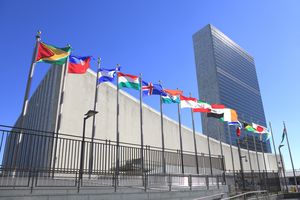‘‘May I request you to put the record straight on the patrimony of the phrase multi-alignment?” wrote a friend, a retired ambassador with a distinguished record in the Indian Foreign Service. “We have a little friendly firing on our [IFS retirees’] blog about it. I mentioned that you were the first person to use it. Some of my friends claim otherwise; they insist that [S.] Jaishankar is the father of this idea.”
I could not resist a wry smile at the query. External Affairs Minister Jaishankar is a friend and professional colleague for many years and there is no sense of rivalry between us, at least none of which I am aware. Nonetheless, it amused me that a phrase that had “sunk without trace” when I first attempted to float it, had now not only become fashionable, but even become the object of debate and “friendly fire” among experts over its origins.
“Multi-alignment” as a term first occurred to me when I was living in New York and making the occasional speech about India’s place in the world. In a land where I was being constantly challenged about the continued relevance of “non-alignment”, to which India stubbornly clung well into the first decade of the 21st century, I offered up this alternative to American audiences. At the time, the world was living through what was dubbed its “unipolar moment,” with the end of the Cold War having inaugurated an unquestioned period of American dominance—geopolitically, militarily, economically and technologically.
China, in those early years of the “noughties” (the ‘00s), was still engaged in a “peaceful rise”, concealing its more assertive and less benign intentions. There was no rival to the US, and Francis Fukuyama’s blithely-titled The End of History and the Last Man, asserting the worldwide triumph of liberal democracy and capitalism as the ultimate forms of human organisation, held complacent sway. Americans challenged me on why India continued to call itself non-aligned when there were no longer two contending superpowers to be non-aligned between.
“Multi-alignment” struck me as the answer. I used it extensively, often with a wry smile, and for the first time formally in a speech at the University of California, Berkeley, where I described “the networked world” thus:
“…the metaphor for today’s globalised world is really that of the world wide web. In this increasingly networked world, we are going to have to work through multiple networks, and those networks will sometimes overlap with each other with common memberships, but sometimes they will be distinct; they all serve our interests in different ways and for different purposes. Thus India can play an influential role with both the United Nations, a universal organisation that has 193 member states, and with the South Asian Association for Regional Cooperation that has only its seven neighbours. It belongs both to the non-aligned movement, which reflects our experience of colonialism, and the community of democracies, which reflects its decades of experience as a democracy. India is a leading light of the global “trade union” of developing countries, the G-77 (Group of 77), which has some 120 countries, and also of the “management”, the G20 (Group of 20 developed and developing countries in charge of global macro-economic policy). We have the ability to be in all these great institutional networks pursuing different objectives with different allies and partners, and in each finding a valid purpose that suits us. This is why I suggest that India has moved beyond non-alignment to what I call multi-alignment.”
When I tried the same formulation as minister of state for external affairs, however, the phrase didn’t catch on. I was considered a little too daring, talking about India’s “soft power” (then a new idea in our discourse) and when I floated “multi-alignment” at the annual conference of Indian ambassadors in 2009, it received a frosty reception.
One senior ambassador disregarded the deference due to my ministerial status and more or less accused me of sacrilege. So I was amused when Jaishankar began using the term as foreign minister, and at the Raisina Dialogue of 2020, was gracious enough to acknowledge that I had come up with the phrase. Since then it has been associated with him. What matters, after all, is not the word, but who gives it currency!
editor@theweek.in


